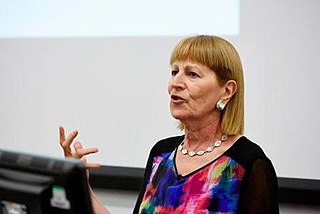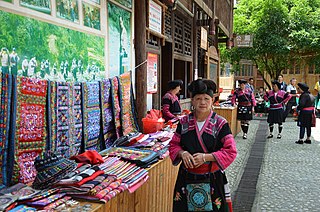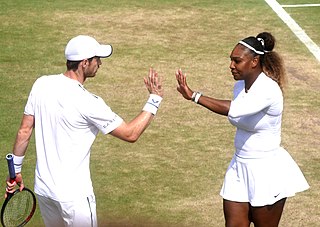Related Research Articles
Employment discrimination is a form of illegal discrimination in the workplace based on legally protected characteristics. In the U.S., federal anti-discrimination law prohibits discrimination by employers against employees based on age, race, gender, sex, religion, national origin, and physical or mental disability. State and local laws often protect additional characteristics such as marital status, veteran status and caregiver/familial status. Earnings differentials or occupational differentiation—where differences in pay come from differences in qualifications or responsibilities—should not be confused with employment discrimination. Discrimination can be intended and involve disparate treatment of a group or be unintended, yet create disparate impact for a group.
The gender pay gap in the United States is a measure comparing the earnings of men and women in the workforce. The average female annual earnings is around 80% of the average male's. When variables such as hours worked, occupations chosen, and education and job experience are controlled for, the gap diminishes with females earning 95% as much as males. The exact figure varies because different organizations use different methodologies to calculate the gap. The gap varies depending on industry and is influenced by factors such as race and age. The causes of the gender pay gap are debated, but popular explanations include the "motherhood penalty," hours worked, occupation chosen, willingness to negotiate salary, and gender bias.
Gender inequality is the social phenomenon in which people are not treated equally on the basis of gender. This inequality can be caused by gender discrimination or sexism. The treatment may arise from distinctions regarding biology, psychology, or cultural norms prevalent in the society. Some of these distinctions are empirically grounded, while others appear to be social constructs. While current policies around the world cause inequality among individuals, it is women who are most affected. Gender inequality weakens women in many areas such as health, education, and business life. Studies show the different experiences of genders across many domains including education, life expectancy, personality, interests, family life, careers, and political affiliation. Gender inequality is experienced differently across different cultures.
Occupational segregation is the distribution of workers across and within occupations, based upon demographic characteristics, most often gender. Other types of occupational segregation include racial and ethnicity segregation, and sexual orientation segregation. These demographic characteristics often intersect. While a job refers to an actual position in a firm or industry, an occupation represents a group of similar jobs that require similar skill requirements and duties. Many occupations are segregated within themselves because of the differing jobs, but this is difficult to detect in terms of occupational data. Occupational segregation compares different groups and their occupations within the context of the entire labor force. The value or prestige of the jobs are typically not factored into the measurements.
Gender inequality in India refers to health, education, economic and political inequalities between men and women in India. Various international gender inequality indices rank India differently on each of these factors, as well as on a composite basis, and these indices are controversial.

Judy Wajcman, is the Anthony Giddens Professor of Sociology at the London School of Economics and Political Science. She is the Principal Investigator of the Women in Data Science and AI project at The Alan Turing Institute. She is also a visiting professor at the Oxford Internet Institute. Her scholarly interests encompass the sociology of work, science and technology studies, gender theory, and organizational analysis. Her work has been translated into French, German, Greek, Italian, Korean, Japanese, Portuguese, Russian, Chinese and Spanish. Prior to joining the LSE in 2009, she was a Professor of Sociology in the Research School of Social Sciences at the Australian National University. She was the first woman to be appointed the Norman Laski Research Fellow (1978–80) at St. John's College, Cambridge. In 1997 she was elected Fellow of the Academy of the Social Sciences in Australia.

Gender differences in suicide rates have been shown to be significant. There are different rates of suicides and suicidal behavior between males and females. While females more often have suicidal thoughts, males die by suicide more frequently. This discrepancy is also known as the gender paradox in suicide.
Gender inequality can be defined as the unequal treatment of individuals based on their gender. Individuals can be marginalised and discriminated from society and be restricted to participate in society due to their gender. Australian women, men, and transgender and non-binary people may all experience aspects of gender inequality. In 2017, Australia ranked as the 35th best country for gender equality.
Gender pay gap in Australia looks at the persistence of a gender pay gap in Australia. In Australia, the principle of "equal pay for equal work" was introduced in 1969. Anti-discrimination on the basis of sex was legislated in 1984.
In the United States, despite the efforts of equality proponents, income inequality persists among races and ethnicities. Asian Americans have the highest median income, followed by White Americans, Hispanic Americans, African Americans, and Native Americans. A variety of explanations for these differences have been proposed—such as differing access to education, two parent home family structure, high school dropout rates and experience of discrimination and deep-seated and systemic anti-Black racism—and the topic is highly controversial.
Structural inequality occurs when the fabric of organizations, institutions, governments or social networks contains an embedded cultural, linguistic, economic, religious/belief, physical or identity based bias which provides advantages for some members and marginalizes or produces disadvantages for other members. This can involve, personal agency, freedom of expression, property rights, freedom of association, religious freedom,social status, or unequal access to health care, housing, education, physical, cultural, social, religious or political belief, financial resources or other social opportunities. Structural inequality is believed to be an embedded part of all known cultural groups. The global history of slavery, serfdom, indentured servitude and other forms of coerced cultural or government mandated labour or economic exploitation that marginalizes individuals and the subsequent suppression of human rights are key factors defining structural inequality.
In Russia the wage gap exists and statistical analysis shows that most of it cannot be explained by lower qualifications of women compared to men. On the other hand, occupational segregation by gender and labor market discrimination seem to account for a large share of it.
The social and economic changes in Thailand in the past decades have important implications for the quality and quantity of labor. The economic and non-economic roles of women in Thailand can be traced back several hundred years in Thai history, when there were traditional discriminatory attitudes towards women in the culture of Thailand. The transformation of Thailand's social and economic structure since the 1960s led to the gender disparities in Thai society. Recently, the position of Thai women in the labor market has improved a lot in comparison to the past as a result of modernization. In 2011, Thailand ranked 69th out of 143 countries in the Gender Inequality Index. In labor economics, gender inequality is widely discussed in terms of concepts of sex segregation and employment discrimination. Thai government and non-governmental organizations have put forth many policies and programs to address gender inequalities in the last few decades.

In 2021, China ranked 48th out of 191 countries on the United Nations Development Programme's Gender Inequality Index (GII). Among the GII components, China's maternal mortality ratio was 32 out of 100,000 live births. In education 58.7 percent of women age 25 and older had completed secondary education, while the counterpart statistic for men was 71.9 percent. Women's labour power participation rate was 63.9 percent, and women held 23.6 percent of seats in the National People's Congress. In 2019, China ranked 39 out of the 162 countries surveyed during the year.
The World Health Organization (WHO) has defined health as "a state of complete physical, mental, and social well-being and not merely the absence of disease or infirmity." Identified by the 2012 World Development Report as one of two key human capital endowments, health can influence an individual's ability to reach his or her full potential in society. Yet while gender equality has made the most progress in areas such as education and labor force participation, health inequality between men and women continues to harm many societies to this day.
Feminist technoscience is a transdisciplinary branch of science studies which emerged from decades of feminist critique on the way gender and other identity markers are entangled in the combined fields of science and technology. The term technoscience, especially in regard to the field of feminist technoscience studies, seeks to remove the distinction between scientific research and development with applied applications of technology while assuming science is entwined with the common interests of society. As a result, science is suggested to be held to the same level of political and ethical accountability as the technologies which develop from it. Feminist technoscience studies continue to develop new theories on how politics of gender and other identity markers are interconnected to resulting processes of technical change, and power relations of the globalized, material world.
Gender inequality in the United States has been diminishing throughout its history and significant advancements towards equality have been made beginning mostly in the early 1900s. However, despite this progress, gender inequality in the United States continues to persist in many forms, including the disparity in women's political representation and participation, occupational segregation, and the unequal distribution of household labor. The alleviation of gender inequality has been the goal of several major pieces of legislation since 1920 and continues to the present day. As of 2021, the World Economic Forum ranks the United States 30th in terms of gender equality out of 149 countries.

The gender pay gap or gender wage gap is the average difference between the remuneration for men and women who are working. Women are generally found to be paid less than men. There are two distinct numbers regarding the pay gap: non-adjusted versus adjusted pay gap. The latter typically takes into account differences in hours worked, occupations chosen, education and job experience. In other words, the adjusted values represent how much women and men make for the same work, while the non-adjusted values represent how much the average man and woman make in total. In the United States, for example, the non-adjusted average woman's annual salary is 79–83% of the average man's salary, compared to 95–99% for the adjusted average salary.

Gender bias on Wikipedia is a term used to describe various gender-related disparities on Wikipedia, particularly the overrepresentation of men among both volunteer contributors and article subjects, as well as lesser coverage of and topics primarily of interest to women.

Gender pay gap in sports is the persistence of unequal pay in sports, particularly for female athletes who do not receive equal revenue compared to their counterparts, which differs depending on the sport. According to the research conducted by BBC, "a total of 83% of sports now reward men and women equally". However, it does not mean that the wage gap in sports has narrowed or disappeared. In 2018, Forbes released the list of the top 100 highest-paid athletes, all of them being male athletes. A similar situation also occurred in 2017, where there was only one female athlete – tennis player Serena Williams — who joined the list and ranked No.56. Billie Jean King brought awareness to the issue of unequal pay in the early 1970s, when she was awarded $2,900 less than her male counterpart at the Italian Open. The timeline of the gender pay gap in sports displays the significant events that have occurred since the 1970s
References
- ↑ "What is the gender gap (and why is it getting wider)?". World Economic Forum. Retrieved 2020-10-27.
- ↑ De Andrés del Campo, Susana; Collado Alonso, Rocío; García-Lomas Taboada, José Ignacio (2020-06-19). "Brechas digitales de género. Una revisión del concepto". Etic@net. Revista científica electrónica de Educación y Comunicación en la Sociedad del Conocimiento. 20 (1): 34–58. doi: 10.30827/eticanet.v20i1.15521 . ISSN 1695-324X.
[1] Ford, H., & Wajcman, J. (2017). ‘Anyone can edit’, not everyone does: Wikipedia’s infrastructure and the gender gap. Social Studies of Science, 47(4), 511-527. https://doi.org/10.1177/0306312717692172
- ↑ Ford, H., & Wajcman, J. (2017). ‘Anyone can edit’, not everyone does: Wikipedia’s infrastructure and the gender gap. Social Studies of Science, 47(4), 511-527. https://doi.org/10.1177/0306312717692172